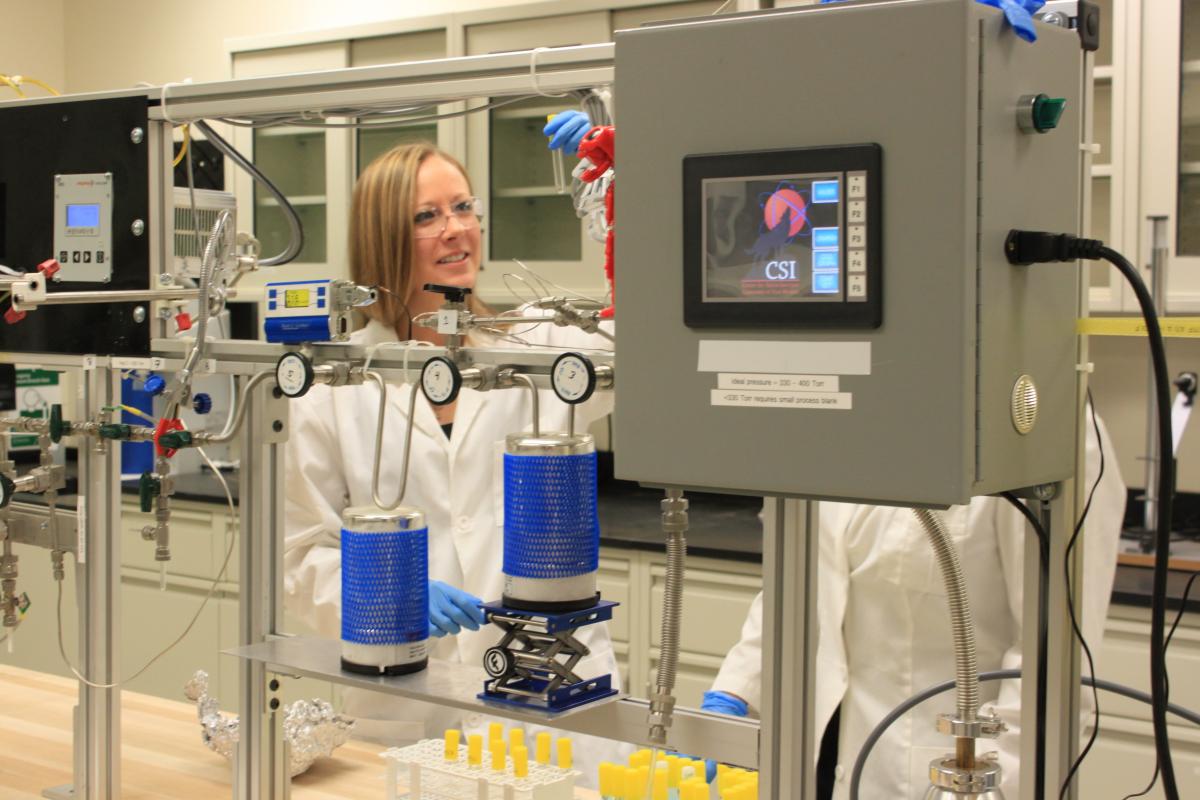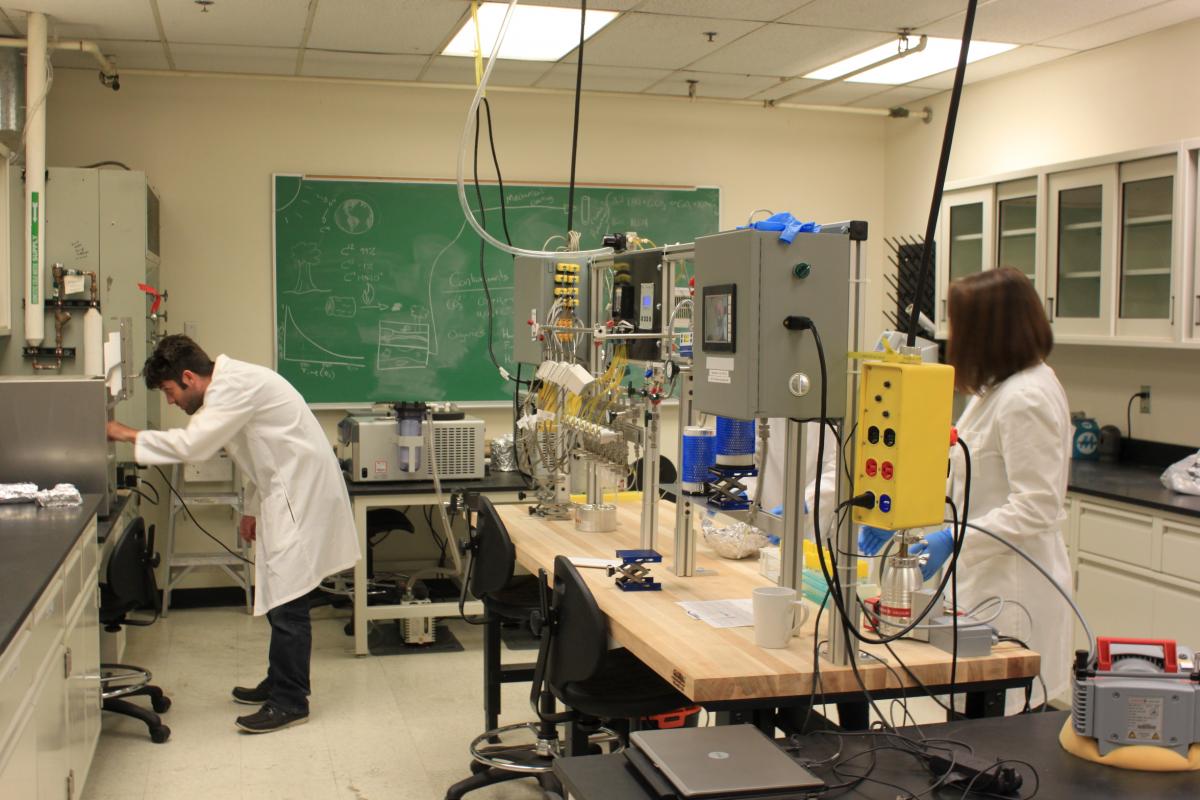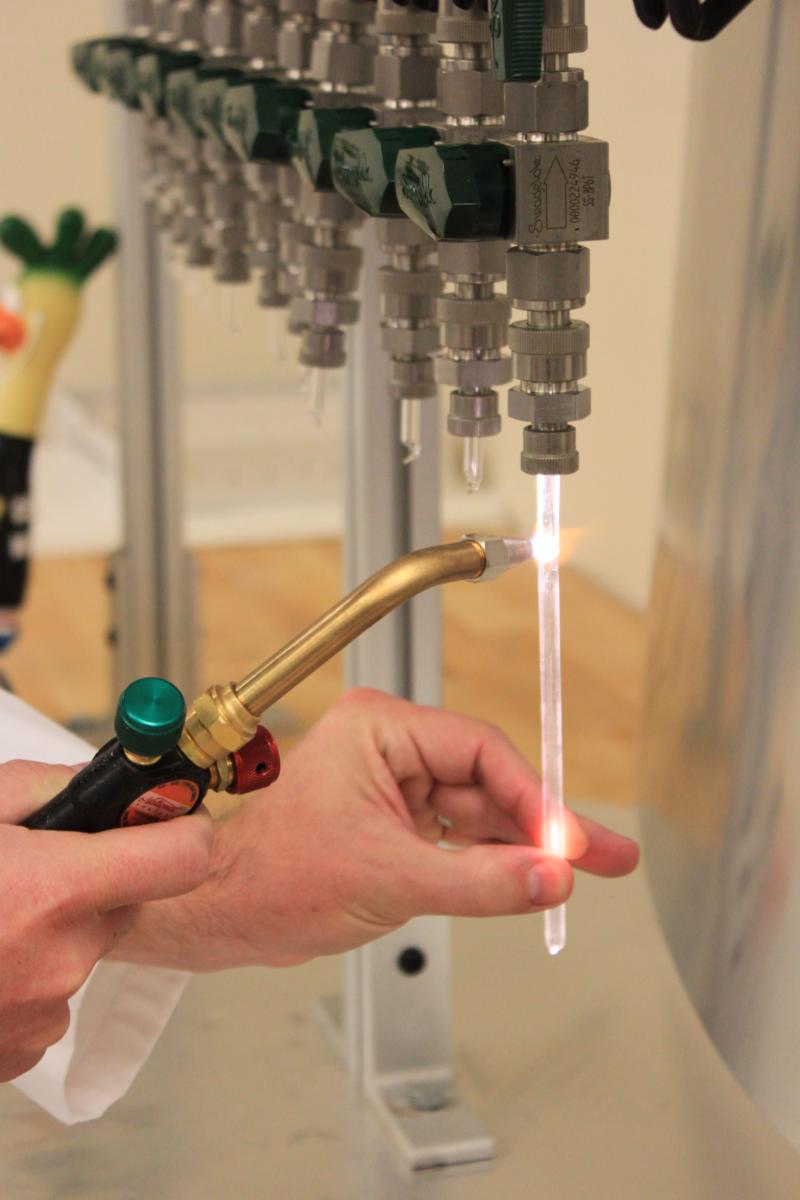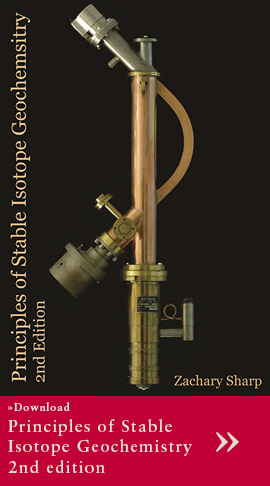Radiocarbon Lab - General Information
 The Radiocarbon facility at the UNM Center for Stable Isotopes is a sample preparation laboratory capable of processing a wide range of materials including organic plant remains (wood, charcoal, pollen), shell (marine or terrestrial), other carbonates (e.g., speleothems), bulk soils (pyrophosphate extraction is highly recommended, contact us for details) as well as human and animal remains (tissue, hair, teeth, and bone). Bone is preferably processed as collagen by either ultrafiltration or amino acid hydrolysis (XAD), with XAD providing the most precise results on old bone samples or those with low collagen yields. For bone samples treated by ultrafiltration or XAD amino acid hydrolysis, IRMS determinations of δ13C and δ15N carbon are included in the analysis. For other materials we can provide analysis of stable isotopes (C, N, S, O, D) in house and by request. See the CSI home page for sample pricing. For student projects at the University of New Mexico and for visiting researchers we can provide reduced pricing as a part of laboratory training. Contact us for details.
The Radiocarbon facility at the UNM Center for Stable Isotopes is a sample preparation laboratory capable of processing a wide range of materials including organic plant remains (wood, charcoal, pollen), shell (marine or terrestrial), other carbonates (e.g., speleothems), bulk soils (pyrophosphate extraction is highly recommended, contact us for details) as well as human and animal remains (tissue, hair, teeth, and bone). Bone is preferably processed as collagen by either ultrafiltration or amino acid hydrolysis (XAD), with XAD providing the most precise results on old bone samples or those with low collagen yields. For bone samples treated by ultrafiltration or XAD amino acid hydrolysis, IRMS determinations of δ13C and δ15N carbon are included in the analysis. For other materials we can provide analysis of stable isotopes (C, N, S, O, D) in house and by request. See the CSI home page for sample pricing. For student projects at the University of New Mexico and for visiting researchers we can provide reduced pricing as a part of laboratory training. Contact us for details.

Samples are chemically pretreated at the Environmental Archaeology Laboratory located in Anthropology Building 142.This lab houses dry and wet lab space with independent HVAC systems. This lab is used for mechanical cleaning and separation of contaminants, Acid-Base-Acid (ABA) washing of samples, as well as wet chemistry for Ultrafiltration and XAD Amino Acid separation. Standard laboratory equipment includes a new fume hood, Millipure water purification, drying oven, two muffle furnaces, semi-micro balances, dissecting and mineralogical microscopes, Hettich Rotofix centrifuge, and general lab supplies. The lab has permits from the USDA for importation of foreign soils allowing us to work with samples from around the world. If your samples include adhering soils and are from foreign country or state or territory where soils are regulated (i.e. Hawaii or Puerto Rico) please contact us before sending your samples and we will provide you with the necessary copy of the permit and a sticker for the shipping container. This lab was swiped for the presence of 14C tracer contamination in 2013 by NOSAMS.
 Samples are combusted and converted to graphite in the CSI Radiocarbon facility in Castetter Hall 155. We routinely prepare samples of ~0.7 mg of carbon, which allows for direct 14C measurement on small samples that are otherwise difficult to date. The Castetter 155 laboratory houses two lines for combustion and graphite preparation. It also contains Labconco Freezone 2.5l Lyopholizer and a Labconco Centrivap freeze dryer, semi-micro balances, and a VWR muffle furnace. Both the combustion line and the graphite line were custom designed and built following modified designs of the facilities at UCI and Penn State University. This lab was swiped for the presence of 14C tracer contamination in 2017 by UCI-KECK AMS.
Samples are combusted and converted to graphite in the CSI Radiocarbon facility in Castetter Hall 155. We routinely prepare samples of ~0.7 mg of carbon, which allows for direct 14C measurement on small samples that are otherwise difficult to date. The Castetter 155 laboratory houses two lines for combustion and graphite preparation. It also contains Labconco Freezone 2.5l Lyopholizer and a Labconco Centrivap freeze dryer, semi-micro balances, and a VWR muffle furnace. Both the combustion line and the graphite line were custom designed and built following modified designs of the facilities at UCI and Penn State University. This lab was swiped for the presence of 14C tracer contamination in 2017 by UCI-KECK AMS.
 We work collaboratively with the Pennsylvania State University Radiocarbon Laboratory. They run a National Electrostatics Corporation 500kV 1.5SDH-1 Compact Accelerator Mass Spectrometer. The 1.5 SDH-1 Pelletron Accelerator runs on a 40-sample MC-SNICS ion source modified with a spherical ionizer operating at high cathode voltage (7 kV). Injector modifications include the addition of a second einzel lens, an increased ion source voltage from 47.5 to 50.5 kV combined with a redesigned large gap injector magnet. These alterations allow for analytical error in the 2–3‰ range for near-modern samples under currents of up to 225 μA of 12C–. Sample sizes of 0.7mg C are routine, with somewhat lower precision on samples smaller than 0.3mg C.
We work collaboratively with the Pennsylvania State University Radiocarbon Laboratory. They run a National Electrostatics Corporation 500kV 1.5SDH-1 Compact Accelerator Mass Spectrometer. The 1.5 SDH-1 Pelletron Accelerator runs on a 40-sample MC-SNICS ion source modified with a spherical ionizer operating at high cathode voltage (7 kV). Injector modifications include the addition of a second einzel lens, an increased ion source voltage from 47.5 to 50.5 kV combined with a redesigned large gap injector magnet. These alterations allow for analytical error in the 2–3‰ range for near-modern samples under currents of up to 225 μA of 12C–. Sample sizes of 0.7mg C are routine, with somewhat lower precision on samples smaller than 0.3mg C.






